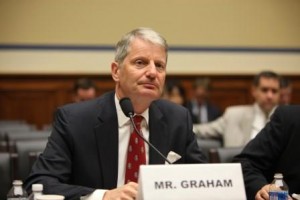Reflections on Risk Adjustment, Reinsurance, and Risk Corridors in ObamaCare
 On Wednesday, June 18, 2014, I had the pleasure of testifying at the House of Representatives’ Committee on Oversight and Government Reform’s Subcommittee on Economic Growth, Job Creation, and Regulatory Affairs. The subcommittee held a hearing it called “Poised to Profit: How ObamaCare Helps Insurance Companies Even If It Fails Patients.”
On Wednesday, June 18, 2014, I had the pleasure of testifying at the House of Representatives’ Committee on Oversight and Government Reform’s Subcommittee on Economic Growth, Job Creation, and Regulatory Affairs. The subcommittee held a hearing it called “Poised to Profit: How ObamaCare Helps Insurance Companies Even If It Fails Patients.”
Much of my testimony was drawn from content in this blog. What struck me was the minority’s emphasis that these provisions, which protect insurers from losing money in ObamaCare, are designed to motivate insurers to offer coverage to sick people.
It is a well-worn talking point of ObamaCare’s supporters that insurers can no longer charge higher premiums or deny coverage to applicants who are expected to have higher health costs, or exclude coverage for pre-existing conditions. Obviously, no insurer will seek to cover these people just because the government wants it to. The market has to be structured to achieve that objective.
As the testimony makes clear, ObamaCare attempts to do this in a way that is unnecessarily over complicated, opaque, and rife for manipulation by insurers. And it does not succeed!
If it did succeed, we would see insurers explicitly competing for sick patients in the exchanges. They would offer plans targeted at people with diabetes, leukemia, or Crohn’s disease — the rarer and more expensive the better!
Impossible? Certainly not: That is what Medicare Special Needs Plans (SNPs) do. Medicare SNPS are a type of Medicare Advantage plan that specializes in covering cancer patients or HIV/AIDS patients or patients with dementia, among other ailments.
We do not see this in ObamaCare exchanges. Instead, we see insurers (unsuccessfully) trying to avoid covering sick people. They maintain narrow provider networks and charge high co-insurance rates for the most expensive specialty drugs, or even exclude necessary drugs for patients that used them before ObamaCare.
ObamaCare’s risk adjustment, reinsurance, and risk corridors will reduce insurers’ risks, but they are not improving the sickest patients’ access to care.


“If it did succeed, we would see insurers explicitly competing for sick patients in the exchanges. They would offer plans targeted at people with diabetes, leukemia, or Crohn’s disease”
^ this I would like to see
It happens in Medicare Special Needs Plans.
The 2 most popular provisions of Obamacare are the pre-existing conditions and the one that allows kids up to 26 to remain on their parents plans. The “kids” provision is popular is this lousy Obama economy that discourages young people from working or working full-time, and the pre-existing provision is simply a pipe dream.
This would never even be attempted in other arenas of insurance. For example, a house without fire insurance would now have to covered if it had previously burned down. How many fire insurance companies are going to clamor for the uninsured burned housing market?
This hearing touched on a tenant of economic incentives. That is: if a risk-mitigating subsidy is made available to insurers, they will respond accordingly. That is really what it was meant to do: entice insurers to offer coverage to people who would otherwise be unprofitable customers.
If due to circumstances beyond their control (e.g. the exchanges weren’t ready), the risk pool is a decade older than they had hoped, insurers will use the funds to offset loses. The problem is largely the hand insurers were dealt; the administration wanted them to compete in the exchange without being able to risk-rate.
Society now has to decide how much risk is worth subsidizing. Rather than bash insurers for doing what they were told to do, lawmakers need to establish clear objectives and communicate those objectives clearly. That way insurers will know what to expect so they can adjust their business model accordingly.
you can watch it here! http://www.youtube.com/watch?v=6v00tnmbgMc
Thanks for the link!
its actually already on the NCPA sight! just thought it would be useful in the comment thread!
haha I didn’t even see it till you said something! thanks anyway for sharing
You mean that insurance companies can’t keep up with a lawless administration that unlawfully changes key provisions of their own law in politically favorable ways anytime they feel like it?
First, the narrow networks are strictly a cost saver not to discourage sick people. More importantly, the risk adjuster is biased so it pays more for sick people. If everyone priced exactly right and I got a healthier population than average, I would lose money – in what world is that right? It is advantageous to have a sicker than average population. But the problem is it shouldn’t matter – the times have shifted so that I am penalized for having healty population!
“What struck me was the minority’s emphasis that these provisions, which protect insurers from losing money in ObamaCare, are designed to motivate insurers to offer coverage to sick people.”
This does less on motivating insurers to offer coverage to sick people, but more in lessening the blow of cost for insurers.